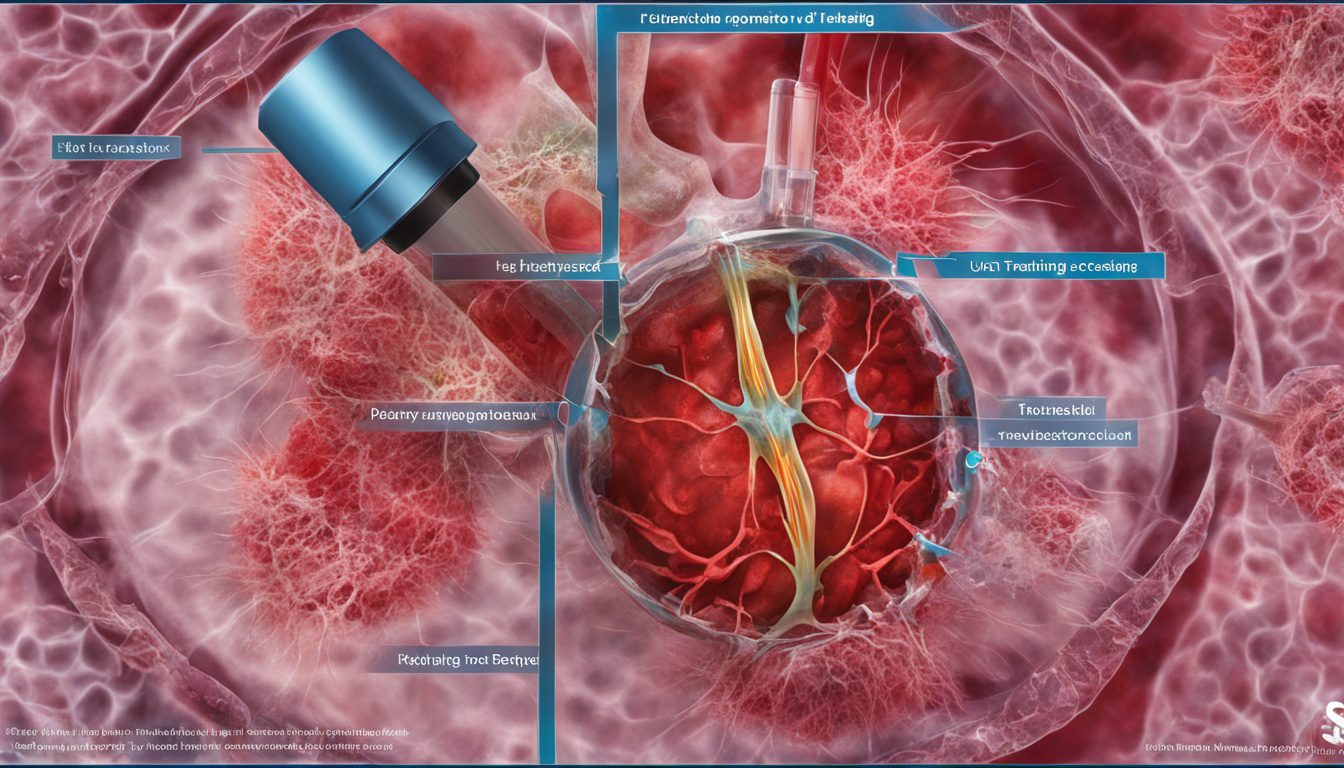Chronic granulomatous disease (CGD) is a condition that impacts the immune system. It mainly affects white blood cells known as phagocytes. These cells fight off bacterial and fungal infections. But, in CGD patients, these cells don’t work right, leading to frequent infections in the lungs, skin, and more.
CGD shows up with symptoms like fever, chest pain, and problems with the stomach. It’s more often found in boys and often noticed when they’re kids. But, some folks may not find out they have it until they’re adults. CGD comes from changes in certain genes that manage immune response proteins.
While there’s no CGD cure, stem cell therapy offers hope. In particular, hematopoietic stem cell transplantation might help. This treatment swaps unhealthy immune cells for new, functional ones. This could make a person’s immune system stronger and their infections less severe.
Key Takeaways:
- Chronic granulomatous disease (CGD) is an inherited immune disorder affecting phagocytes and causing frequent infections.
- CGD can lead to fever, chest pain, and stomach issues, and more.
- It’s caused by gene changes affecting immune protein production and function.
- Boys are often the ones with CGD, and diagnosis usually happens in childhood.
- Stem cell therapy, especially hematopoietic stem cell transplantation, could be a treatment path. This procedure swaps out defective immune cells for healthy ones.
Understanding Chronic Granulomatous Disease
Chronic granulomatous disease (CGD) is a type of inherited disorder. It causes white blood cells – phagocytes – to not work properly. These cells usually ‘eat up’ and kill bacteria and fungi. But in people with CGD, this doesn’t happen as it should. This leads to getting sick a lot from bacterial and fungal infections.
CGD can harm many parts of the body. This includes the lungs, skin, liver, and gut. It often shows up when one is a child. But, sometimes, people find out they have it as adults. CGD comes from messed up genes. These genes needed for the phagocytes to work well don’t do their job. So, the body can’t fight off infections well.
In CGD, the problem with phagocytes makes it hard to fight infections. People might get sick often. They could also have granulomas, which are like clumps of extra tissue. These happen when the body tries to treat infections that just won’t go away.
Diagnosing and Managing Chronic Granulomatous Disease
Diagnosing chronic granulomatous disease (CGD) is a detailed process. It includes patient checks, tests, and genetic studies. Medical history and symptoms are key. Blood tests help find CGD clues. This data aids in spotting risk factors and building a full disease view.
To confirm CGD, a genetic test is done. It finds the gene changes linked to CGD. These changes are crucial for knowing the genetic issues behind CGD.
After diagnosis, CGD care focuses on fighting infections and bettering immune power. Every treatment is aimed at each person’s unique needs. A mix of methods might be used.
Medical Management
Infections are a big worry for CGD patients. This is due to lacking neutrophil action. They often get antibiotics, antifungals, and antivirals. Which medicine is used depends on the illness and patient’s health. Checking often and updating the treatment is vital.
Stem Cell Therapy
HSC transplantation is considered for severe CGD cases. Healthy stem cells replace the faulty ones. This procedure aims to fix immune problems and cut down on infections. But it is complex. A lot is considered, like the patient’s health and finding a good match with the donor.
With proper care, those with CGD can have a good life. But CGD’s outcome depends on its seriousness and how well it’s treated. Regular check-ups and care are crucial for a healthy life with CGD.
| Treatment Approaches | Objective |
|---|---|
| Medical Management | Manage infections and combat disease-causing microorganisms |
| Stem Cell Therapy (HSCT) | Replace defective stem cells with healthy ones to restore immune function |
Conclusion
Chronic granulomatous disease (CGD) is a complex disorder that affects the immune system. It can cause serious problems for those who have it. It’s important to manage the disease well to make life better for people with CGD.
Early diagnosis is key to starting the right treatments. These treatments often involve using antibiotics and antifungal drugs to fight off infections. But there is also hope in a new treatment, stem cell therapy, which aims to fix the immune system by replacing bad cells with good ones.
Thanks to ongoing research, we are learning more about CGD. This knowledge is leading to new and better ways to handle this rare genetic issue. With the progress in diagnosis and stem cell therapy, there is more hope than ever for those living with CGD.

